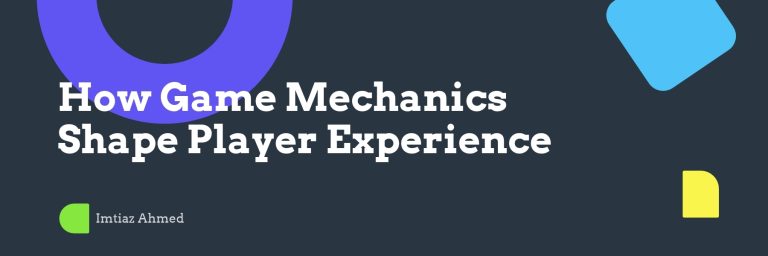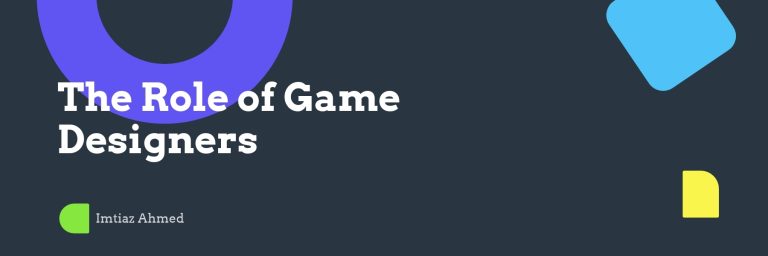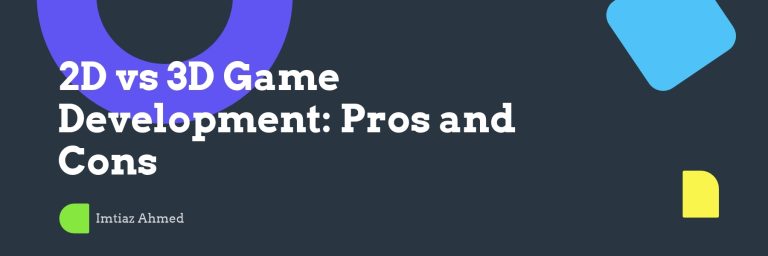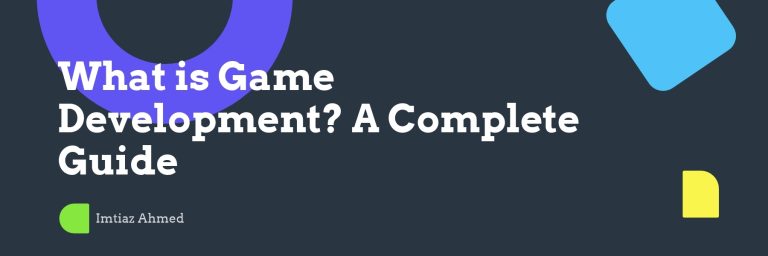Key Takeaways
Game design is a dynamic craft where creativity meets structure, and the path to becoming a sought‑after game designer is paved with deliberate iteration, collaboration, and continuous learning. Below are the essential takeaways that illuminate the career journey and the practical habits every aspiring professional should adopt.
- Master the Iteration Loop: Allocate 80 % of your time to refining concepts, not just ideation, turning rough ideas into polished experiences. In practice, this means setting clear milestones, documenting every tweak, and treating each version as a learning opportunity.
- Prototype Quickly, Test Often: Build playable prototypes early and iterate based on player feedback, turning theory into tangible gameplay. Rapid prototyping tools like Unity’s Play Mode or Unreal’s Blueprint allow you to surface design flaws before they become costly.
- Data-Driven Decisions: Leverage playtest metrics and analytics to guide design choices, ensuring each tweak enhances player engagement. Use dashboards to track session length, drop‑off points, and completion rates, and iterate until the data tells a consistent story.
- Collaborate Across Disciplines: Work hand‑in‑hand with artists, programmers, writers, and producers to fuse vision with technical feasibility. Structured communication—daily stand‑ups, shared boards, and RACI matrices—keeps everyone aligned.
- Showcase Iterative Growth: Highlight your portfolio with before‑and‑after examples, demonstrating how you evolved concepts through cycles. Visual storytelling with metrics—like a 15 % rise in level completion after a redesign—adds credibility.
- Navigate the Role Spectrum: Understand the progression from level designer to creative director, and identify the skills required at each level. Map your growth trajectory, set micro‑goals, and seek mentorship to accelerate advancement.
- Stay Ahead of Trends: Keep up with emerging tools, engines, and platforms, positioning yourself as a forward‑thinking designer. Early adoption of Unreal Engine 5’s Nanite or Unity’s DOTS can give you a competitive edge.
- Build a Professional Network: Attend conferences, join online communities, and seek mentorship to open doors and gain industry insight. A strong network fuels both inspiration and career momentum.
- Balance Passion with Persistence: Embrace setbacks as learning opportunities, and let resilience drive your creative evolution. Celebrate micro‑wins and practice regular reflection to sustain long‑term motivation.
Armed with these insights, you’re ready to chart a purposeful path in game design, turning your passion into a thriving career. The following sections dive deeper into each element, offering actionable strategies to help you succeed in the competitive world of game development.
Introduction
What if the secret to a blockbuster hit isn’t flashy graphics but a relentless iteration loop? In the gaming world, the average game designer spends roughly 80 % of their time refining concepts, not just dreaming them up. Mastering that loop transforms raw ideas into polished experiences, and it’s the skill that turns a side‑project enthusiast into a sought‑after game designer.
By learning to prototype quickly, test often, and let data drive decisions, you’ll position yourself as a professional who can turn creative vision into engaging, market‑ready products. Below, we break down the essential habits every aspiring professional should adopt— from rapid prototyping to navigating the spectrum from level designer to creative director—so you can chart a purposeful path in the competitive world of game development.
Mastering the Iteration Loop
Understanding the 80/20 Design Principle
-
In practice, game designers spend 80 % of their time on iteration, not ideation. This means refining mechanics, balancing levels, and polishing user experience far outweighs the initial spark of ideas.
-
Balancing ideation with iterative polish involves setting clear milestones: sketch the core concept, prototype quickly, then cycle through feedback until the design feels cohesive.
Implementing Structured Feedback Cycles
-
Set up regular review checkpoints—weekly or bi‑weekly—to evaluate progress against objectives and keep momentum high. A simple “Design Sprint Review” template can capture what worked, what didn’t, and what to test next.
-
Use design documents as living artifacts, tracking changes, rationales, and outcomes so every iteration is intentional. Version control systems like Git can store each iteration, making rollback and comparison effortless.
With a disciplined iteration loop, the next step is turning concepts into playable prototypes that can be tested and refined.
Rapid Prototyping & Playtesting
Building Low-Fidelity Prototypes Quickly
-
Leverage tools like Unity’s Play Mode, Unreal’s Blueprint visual scripting, or Godot’s GDScript to assemble core mechanics in minutes. Even paper prototypes or interactive storyboards can surface narrative issues early.
-
Turning theory into playable mechanics early allows you to uncover design flaws before committing resources. For instance, a simple “gravity switch” prototype can reveal pacing problems that would be costly to fix later.
Iterative Playtesting Sessions
-
Design effective test scenarios that target specific mechanics or narrative beats, ensuring focused feedback. Use “targeted playtests” where players are given explicit tasks rather than open-ended exploration.
-
Collect qualitative observations and quantitative metrics (e.g., completion rates, error counts) to inform data‑driven tweaks. Tools like PlayFab or GameAnalytics can capture real‑time data without manual logging.
Playtesting data feeds directly into the next phase—leveraging these insights to drive design decisions.
Data-Driven Design Decisions
Leveraging Playtest Metrics
-
Key performance indicators for player engagement include session length, repeat play frequency, and drop‑off points. Tracking these over successive iterations shows whether changes are moving the needle.
-
Analyzing data reveals patterns—if 40 % of players abandon a level at a specific obstacle, iterate on that challenge to improve flow. A/B testing different obstacle placements can confirm the most effective design.
Integrating Analytics into the Development Pipeline
-
Choose analytics tools that integrate with your engine, such as Unity Analytics or GameAnalytics, to capture real‑time data. Custom event hooks can log player actions like “jump”, “attack”, or “pause”.
-
Automate data collection with custom event hooks so you can monitor performance without manual intervention. Dashboards that auto‑update provide instant visibility for the entire team.
With analytics in place, you’re ready to collaborate across disciplines, ensuring every team member aligns with data‑backed objectives.
Cross-Disciplinary Collaboration
Working with Artists, Programmers, and Writers
-
Communication strategies such as daily stand‑ups and shared design boards keep the vision coherent. Using tools like Miro or Figma allows real‑time feedback on visual assets.
-
Ensuring creative vision aligns with technical feasibility requires early prototyping and regular technical reviews. A “Tech Feasibility Checklist” can pre‑empt bottlenecks.
Role of Producers in the Design Process
-
Balancing scope, schedule, and quality involves setting realistic milestones and adjusting resources as needed. A rolling roadmap keeps the team focused on deliverables.
-
Collaborative decision‑making frameworks, like the RACI matrix, clarify responsibilities and streamline approvals. Clear ownership reduces friction during crunch periods.
These collaborative practices create a foundation for showcasing your iterative growth in a compelling portfolio.
Showcasing Iterative Growth in Your Portfolio
Before‑and‑After Case Studies
-
Document design evolution from concept sketches to final implementation, highlighting key iterations and their impact. Include screenshots, flowcharts, and short videos that illustrate the change.
-
Highlight problem‑solving and creative growth by explaining the rationale behind each change. A narrative that explains “why” is as important as the visual “what.”
Presenting Playtest Findings
-
Visualize data with charts that show improvement in player retention or reduced error rates after each iteration. Use heatmaps or funnel charts to communicate insights succinctly.
-
Storytelling with metrics demonstrates tangible results, such as a 15 % increase in completion rates after a level redesign. Quantifiable outcomes resonate with hiring managers.
With a polished portfolio, you’re positioned to advance through the game design career ladder.
Career Path: From Level Designer to Creative Director
Understanding Game Development Roles
-
Key responsibilities of a video game designer include conceptualizing mechanics, balancing gameplay, and collaborating with cross‑functional teams. Each role builds on a foundation of iteration and data‑driven decision making.
-
Roles evolve across a game design career—from focused level design to overarching creative direction and strategic leadership. Transitioning requires expanding soft skills like communication, mentorship, and business acumen.
Skill Sets for Each Career Stage
-
Technical and soft skills required for level designers encompass level scripting, spatial reasoning, and clear documentation. Mastery of engine tools and scripting languages is essential.
-
Leadership and vision needed for creative directors involve portfolio curation, mentorship, and aligning design with business goals. They must translate player data into strategic vision.
Armed with these insights, you can map your growth trajectory and seek opportunities that match your evolving skill set.
Staying Ahead of Industry Trends
Emerging Tools and Engines
-
Latest game engines such as Unreal Engine 5 and Unity 2025 offer real‑time rendering and procedural content tools that accelerate iteration. Features like Nanite and Lumen enable designers to prototype visually rich worlds quickly.
-
Adopting new technology early—like low‑poly asset pipelines or AI‑assisted animation—can give a competitive edge. AI tools can auto‑generate NPC behaviors or procedural level layouts, freeing designers for higher‑level creativity.
Platform and Market Shifts
-
Impact of mobile, VR, and cloud gaming on design requires rethinking control schemes, monetization models, and content delivery. For example, a VR game must consider comfort metrics and spatial audio to prevent motion sickness.
-
Adapting design philosophies to new platforms ensures relevance and opens new revenue streams. A cross‑platform approach can extend a game’s lifespan and audience reach.
With industry awareness, you can position yourself as a forward‑thinking game designer.
Iteration Beyond Games
While game design thrives on rapid iteration, the same principles translate to other sectors. In healthcare, iterative prototype testing of diagnostic tools helps identify usability issues before clinical trials. Finance uses agile sprints to refine risk models, constantly feeding back data from market simulations. Education designers iterate on adaptive learning pathways, using student performance metrics to adjust difficulty in real time. By studying these cross‑industry examples, game designers can adopt a broader mindset of continuous improvement, making their skill set valuable in diverse contexts.
Building a Professional Network
Industry Events and Conferences
-
Key conferences for game designers include GDC, PAX, and SIGGRAPH, offering workshops and networking lounges. Attending talks on emerging tech can spark fresh ideas.
-
Maximizing networking opportunities involve preparing concise pitch decks and following up with contacts post‑event. A well‑crafted elevator pitch that highlights your iterative strengths can open doors.
Online Communities and Mentorship
-
Leveraging forums, Discord servers, and LinkedIn groups connects you with peers and industry veterans. Engaging in constructive critique fosters growth.
-
Finding and working with mentors in game development accelerates skill acquisition and career guidance. Mentors can help you navigate role transitions and portfolio refinement.
These connections fuel both creative inspiration and professional advancement.
Balancing Passion with Persistence
Learning from Setbacks
-
Turning failures into iterative lessons involves documenting what went wrong and hypothesizing fixes for the next cycle. A “Failure Log” can become a valuable reference for future projects.
-
Maintaining creative momentum requires setting micro‑goals and celebrating small wins. A visual progress board keeps motivation high during long development cycles.
Developing a Resilient Mindset
-
Strategies for sustaining long‑term motivation include regular reflection, skill diversification, and healthy work‑life boundaries. Mindfulness practices can reduce burnout and keep the creative spark alive.
-
Mindfulness and work‑life balance in game design reduce burnout and keep the creative spark alive. Scheduling breaks and setting clear work hours help maintain focus.
Conclusion
Mastering game design begins with disciplined iteration: allocate 80 % of effort to refining mechanics, embed structured feedback checkpoints, and leverage low‑fidelity prototypes to surface flaws early. Data‑driven playtesting—capturing metrics like session length and drop‑off points—transforms subjective impressions into actionable insights, while seamless analytics integration keeps every team member aligned. Cross‑disciplinary collaboration, supported by clear communication frameworks, ensures artistic vision and technical feasibility stay in sync, setting the stage for a portfolio that showcases tangible growth through before‑and‑after case studies and visualized metrics.
As engines evolve and platforms shift, staying ahead means adopting emerging tools and rethinking design philosophies to unlock new revenue streams. Building a professional network and cultivating a resilient mindset further sustain creative momentum, turning setbacks into iterative lessons. Looking ahead, the next frontier for game designers is the convergence of immersive technologies—VR, AR, and cloud gaming—with data‑rich, player‑centric design. Those who can anticipate and shape this convergence, integrating AI‑generated content, real‑time analytics, and cross‑platform storytelling, will define the next generation of player experiences. The real challenge isn’t just mastering iteration; it’s mastering the art of continuous adaptation in a world where player expectations, technology, and markets evolve at a breakneck pace. Embrace the loop, stay curious, and let every iteration bring you closer to that future where your designs don’t just entertain—they transform the way people interact with digital worlds.





